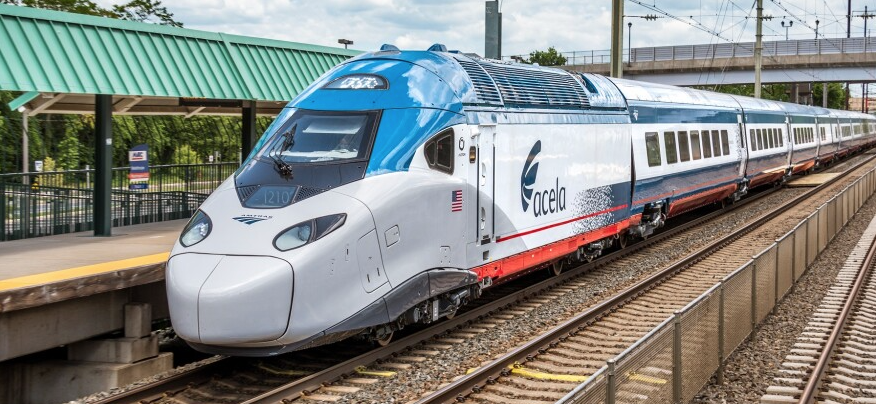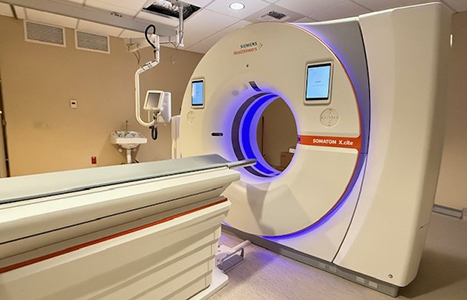The electric line is a literal ‘third rail’
||| FROM CASCADIA DAILY NEWS ||| REPRINT AT REQUEST OF ORCASONIAN READER
There’s light rail; there’s high-speed rail and there’s ultra-high-speed rail. Then there’s the “third rail,” the electrified line that provides a metaphor for controversial topics you’d best not touch.
A relatively modest $150 million investment in the $16.8 billion state transportation budget — Move Ahead Washington — that Gov. Jay Inslee recently signed raises issues that may end up touching all four rails.
That $150 million was set aside as seed money to attract possible federal matching funds — between $600 million and $700 million — for advanced planning for a dedicated 300-plus-mile ultra-high-speed rail line serving Portland, Ore., Seattle and Vancouver, B.C., with other stops likely, including Bellingham and Everett.
As planned, the line — separate from the existing rail line used for Amtrak, Sounder and Burlington Northern Santa Fe’s freight service — would run 260-passenger electric “bullet” trains, reaching speeds of 220 mph, up to 30 times a day and serving 2.1 million riders annually when service starts in 2035, and 3.3 million passengers by 2055.
Passengers between Portland and Seattle would make the trip in about an hour, as would those between Seattle and Vancouver, B.C. Current passenger rail travel times are three-and-a-half hours between Seattle and Portland and between Seattle and Vancouver, when service to Canada resumes in June.
That $150 million investment, and others in aviation electrification, low-carbon aviation fuels and more, said state Sen. Marko Liias, D-Everett, chairman of the Senate’s transportation committee, in an interview last week, represent a “1 percent investment in the future of transportation that will provide solutions as the region grows.”
If federal funding is secured, a total of up to $850 million would be spent for design work, route planning, engineering, environmental reviews and community outreach in coming years to develop, Liias said, “a fully baked proposal we can all consider.”
There’s already concern, however, that the state and federal funds could allow enough momentum to gather behind the proposal to prevent stopping the train before arrival at Boondoggle Station; and perhaps will divert investments needed elsewhere by a similar upgrade of the existing rail line and efforts to keep Sound Transit’s regional Link Light Rail system connecting Everett, Seattle, Bellevue and Tacoma on its already delayed schedule.
An earlier study has set the cost for the cross-state bullet train project — dubbed Cascadia — at between $24 billion and $42 billion to complete, depending on final land acquisition costs, eminent domain legal fights and how much tunneling would be involved.
**If you are reading theOrcasonian for free, thank your fellow islanders. If you would like to support theOrcasonian CLICK HERE to set your modestly-priced, voluntary subscription. Otherwise, no worries; we’re happy to share with you.**









Bullet train planners and supporters need to review the history of other high speed, high tech stupidities such as the Concorde.
What we actually need is a SLOW train system. One that runs often and cheaply, stops frequently and is entirely electric. We need trains that are cheap to construct, cheap to operate and run on cheap to build track that is easily repaired. Do you REALLY want 30 trains a day at 220 mph blasting through the middle of your town? How many insane overpasses and underpasses will have to be built? What happens when a 220mph train comes off the tracks? Or hits a cow? Or a school bus? No. The whole stupid idea should be thrown into the recycle bin and a realistic rail system that services the people who live here needs to be planned. Not some high tech “bullet train” boondoogle project that if it ever did manage to get constructed would ONLY benefit the super-rich traveling between the major regional cesspools – cities, I mean cities.
What Ken said! Yes!
I’m all for Ken’s idea!
The previous commenters have probably never ridden the French TGV (Tres Grande Vitesse) or the Japanese Shinkansen high-speed rail systems, which have no parallels in the United States. We are WAY behind much of the rest of the Western world in this area. Washington and Oregon (and BC) should at least consider some kind of upgrade of the existing Amtrak lines akin to the Acela system in the New England and Mid-Atlantic states. That would not involve any new tracks being laid.
Just a few thoughts:
1. I believe that for most Amtrak rail lines, including in Washington state, the freight companies take priority over Amtrak. For Amtrak routes that have only a few trains a day, this conflict can be “reasonably” managed, but if any plan that expects a dozen or more trains a day will likely have issues and frequent delays.
Ref: https://www.amtrak.com/content/dam/projects/dotcom/english/public/documents/corporate/HostRailroadReports/Amtrak-2020-Host-Railroad-Report-Card-FAQs.pdf
2. Energy efficiency should certainly be a concern, but I believe that high speed electric rail (as is common in much of Europe and Asia) is comparable to slightly better in KW/mile traveled to traditional electric trains (and usually more efficient than fossil fuel-based power, though that does depend on the means of electricity production and efficiency of energy transmission)
Ref: https://journals.sagepub.com/doi/abs/10.3141/2159-04
3. Cost is another factor, of course, but I would expect that the predominant cost today is obtaining right-of-way (see #1 for the issues for sharing track) and regulatory compliance (which is only slightly higher for high-speed than traditional). Conversely, on the demand side, I would also assume that the demand — and therefore the expected fair market price — for high speed to be higher, and therefore high-speed rail will generated more $/mile than traditional rail, offsetting (to some degree, perhaps fully) increased cost.
All that said, I’m not sure how much all of this will help those of us on Orcas, unless/until there are good options for passenger transport from the ferry terminal to Bellingham/Mount Vernon. If I’m taking my car on the ferry all the way to the Amtrak station in Bellingham, I’ll just as well drive to Seattle.
Bullet trains may be “so last century.” Acquisition of land to host new track from Portland to BC is much more complicated in these days of NIMBY (not in my back yard). We are seeing similar issues – e.g. cost, permitting, delay, and court battles – for land intensive solar and wind projects throughout the US. In the time that it would take to do a bullet train track, I suspect high-speed short-hop electric air shuttles will be making their way between northwest metro-hubs (Portland, Seattle, Vancouver, Victoria), and thus, the question becomes what connects the northwest to California? Perhaps a fusion powered boring laser carving a tunnel between Portland and San Francisco, with a little earthquake flex-channel around the fault-lines! Seriously though, there is an amazing amount of disruptive innovation afoot. For one example, see PBS NewsHour Miles O’Brien’s excellent overview of the current state-of-the-art innovation in electric airplane development. https://www.pbs.org/wgbh/nova/video/great-electric-airplane-race/
@Jay — totally agreed with the NIMBY issues, just look at the California high-speed rail initiative; that’s what I was alluding to with the comment about acquiring right-of-way being the major cost.
Thinking outside the box, what do you think about electrically power Ground Effect Vehicles? Something like the Regent (https://www.regentcraft.com/seagliders/viceroy – being considered for English Channel crossings) or the Sea Wolf (https://www.seawolfexpress.eu/ , planned for use in Finland)
Ken, Yes, Great point. Ground effect will be a factor too. One of the intriguing things about the emerging electric short-hop air transport is the minimal requirement for landing facility. They are vertical take off and landing (VTOL), requiring not much more than a helipad sized landing zone, plus some charging systems and waiting room. So serving the islands will be a natural, connecting the islands to nearby metro centers.
Given WA DOT’s focus on Seattle ferry electrification, it looks like they will not have eFerries in San Juan County until the late 1930s, so i expect short-hop ePlane shuttles to be serving our islands well ahead of the ferries. Maybe ground effect vehicles too!
The key thing is that the air transport layer will benefit from minimal land requirements, avoiding the permitting NIMBY complexity. Air transport adds a third dimension to route density, allowing for new ways to move people and material through vertical layers of transport arteries. Add in autonomous air traffic control and we have Jetsons! See Miles O’Brien’s link above for more on the autonomous management of commuter airspace.
I know we all loved Popular Mechanics and imbibed the myth of Progress with our mother’s milk, but the future is not going to be about getting there faster (physically). What is the point of wasting prodigious sums of energy (embodied as well as kinetic) to move people through the air or in a ‘bullet’ train? How much is YOUR time worth?
For people coming to vacation in the islands, the ferry ride is a part of the experience; they are coming here to SLOW DOWN. If you, as an islander, need to go to a doctor’s appointment in Bellingham and you don’t want to deal with the ferry, there are already airplanes that will take you. If they were electrically powered airplanes or ground-effect vehicles, that might be an ecological improvement in how they are propelled, but it’s never going to be a real transportation system; it’s just gee whiz technology for the convenience of the very wealthy.
Moving people around physically is definitely last century and simply energetically unaffordable in a post-carbon world. Zoom is just the beginning of virtual contact technologies. There are already holographic projection units in use and I suspect that as virtual meeting rooms become more sophisticated that there will be even less excuse for face to face meetings. Unless you literally work with your hands, your physical presence is literally not essential, and like it or not, people who work with their hands are not presently valued highly enough to take bullet trains or air transport. So I ask you, WHAT IS THE POINT of high tech, high speed, high energy transportation? The future is SLOW and I predict that we will be all the happier for that fact.
Amen.
What Ken said ,too. Let’s also remember the wildlife we have here and where they tend to end up in winter months… on the roads and any place that’s clear of snow or tree coverage. It’s a lot different here than in S. Korea or Germany. Imagine hitting a deer at 200 MPH. Imagine the fence line. And where is the environmental study of the preserves this track will pass through? Inslee and company can’t even manage to allocate recourses into the transportation systems WA has now. This is a wishful moonshot to get votes from the uninformed, not realistic. It’s another Big Bertha (Big Dig), and stupid idea… much like the $100mm taxpayers dollars for electric vehicle incentives. Does everyone know that 6% of EV batteries are made in the US? 6%. And who has the infrastructure and means to recycle all these toxic batteries every 3-5 years? Not that US. WA is putting the cart way before the horse and the current officials are pushing the cart so far forward that we’ll all be looking to jump.